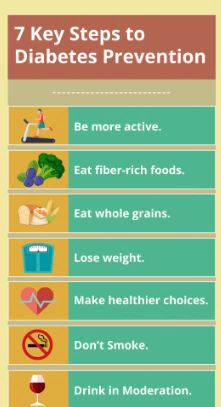Diabetic Air Fryer Cookbook
The Ultimate Guide To Prepare Healthy Air Fryer Fried Food With Low Fat, Low Sugar, And Low Carb To Manage Type 1 And Type 2 Diabetes.
Erica Diason
Copyright 2021 by Erica Diason - All rights reserved .
This document is geared towards providing exact and reliable information in regard to the topic and issue covered.
- From a Declaration of Principles which was accepted and approved equally by a Committee of the American Bar Association and a Committee of Publishers and Associations.
In no way is it legal to reproduce, duplicate, or transmit any part of this document in either electronic means or in printed format. All rights reserved.
The information provided herein is stated to be truthful and consistent, in that any liability, in terms of inattention or otherwise, by any usage or abuse of any policies, processes, or directions contained within is the solitary and utter responsibility of the recipient reader. Under no circumstances will any legal responsibility or blame be held against the publisher for any reparation, damages, or monetary loss due to the information herein, either directly or indirectly.
Respective authors own all copyrights not held by the publisher.
The information herein is offered for informational purposes solely and is universal as so. The presentation of the information is without contract or any type of guarantee assurance.
The trademarks that are used are without any consent, and the publication of the trademark is without permission or backing by the trademark owner. All trademarks and brands within this book are for clarifying purposes only and are owned by the owners themselves, not affiliated with this document.
Table of Contents
Introduction
Obesity is a medical condition when an individual has gained body fat too much, which can cause bad effects on their health. This varies from becoming overweight, where bone, muscle mass, fat, or body water growing to be the cause of the weight. A person is deemed obese if they weigh at least 20 pounds more than a healthy weight. For several different causes, obesity may occur, such as eating too many calories, contributing to an inactive lifestyle, and inadequate sleep. But irrespective of the cause, Obesity increases the risk of serious illnesses, including heart disease, type 2 diabetes, and high blood pressure.
There is a significant chance of having type 2 diabetes in obese individuals, which is often classified as adult-onset diabetes or insulin-resistant. This is a disorder when the amount of glucose in the blood is consistently high. In obese people, fat tissue cells could process more calories than they can consume. An inflammation activates a protein called cytokinesis caused by the tension in these cells by consuming too many nutrients. Cytokines, therefore, block insulin receptor signals, allowing the cells to become immune to insulin eventually. Insulin encourages glucose to be used by the cells for nutrition. Your body will be unable to turn the glucose into energy because your cells are immune to insulin, and you wind up with a consistently elevated blood glucose level.
Stress often induces inflammation of cells and may contribute to heart failure, in addition to reducing natural responses to insulin. Becoming obese or overweight raises the risk of having the prevalent type 2 diabetes; the body contains adequate insulin, yet the bodys cells have become immune to insulins action. The insides of human cells are strained by extra weight. The cells membrane sends out a warning signal asking the cell to diminish the insulin cell surface receptors whenever the cells have more nutrients to absorb than they can accommodate. This represents insulin intolerance and persistently elevated sugar glucose in the blood, one of the clear diabetes indicators.
Diabetic patients are more likely to have severe heart complications, such as diabetic cardiomyopathy, coronary artery disease, heart failure, relative to individuals without diabetes. The heart needs to function particularly hard in obese or diabetic people by moving blood across the body as a consequence of the buildup of fatty substances all through the arteries. For people affected by obesity, particularly those with type 2 diabetes, weight reduction is an important approach. Moderate and consistent weight reduction, at least 510% weight reduction, will increase insulin activity, reduce the rate of fasting blood glucose, and decrease the need for certain drugs for diabetes.
To reverse diabetes symptoms, or at least to reduce the chances of getting diabetes, you must observe your lifestyle. An exercise, healthy diet, and behavior change program that will handle obesity effectively. These variables will significantly assist you with managing obesity and type 2 diabetes.
Balance and healthy diet
Physical exercise
Medications
Physical Exercise is as necessary as medication, but an air fryer comes in handy when it comes to a healthy and balanced diet.
By regulating your diet and observing what you consume and how it affects your body, you can accomplish weight loss. You can now enjoy healthy fried foods. Although fried food goes together with healthy food, now it is possible to cook healthy food with an air fryer. Air frying is, on certain standards, easier than cooking in oil. It decreases calories by 70-80% and has a ton less fat.
This form of cooking may also minimize any of the other adverse consequences of oil frying. When you fry starchy foods, the product of this reaction creates the chemical acrylamide, which evidence ties to higher cancer risks. Air fryers offer the flavor, feel, and golden-brown color of oil-fried foods without all the calories. Air fryers are cooking devices that fry food by rotating heated air across the food. To achieve a comparable flavor and feel, air-fried foods are claimed to be safer and healthier than deep-fried foods since they need less oil.
Now, you can enjoy a healthier version of fast-fried food without worrying about the consequences.
Chapter 1. Diabetes and Obesity

Diabetes is a stubborn condition that arises from two reasons when the pancreas cannot produce Insulin enough for body needs or whenever the Insulin it provides may not be utilized properly by the body. Insulin is a blood sugar-regulating hormone. Hyperglycemia, or high blood sugar, is a typical result of uncontrolled diabetes, causing significant harm to the bodys structures, especially blood vessels and nerves over time. Diabetes mellitus is a category of illnesses that influence how the body uses glucose. Glucose is essential to your well-being. The cells that make up the muscles and tissues require a significant supply of glucose. Its the brains primary power supply, too. The primary issue of diabetes varies based on the type of diabetes. And this can result in excessive sugar in the blood, no matter what kind of diabetes a person has. If there is too much sugar, it can lead to grave health issues. The insulin hormone transfers the sugar into the cells from the blood.
High levels of blood sugar may cause harm to your kidneys, eyes, organs, and nerves.
To understand what is the main reason for diabetes, you should know what the normal route of glucose consumption in the body is.
How Glucose and Insulin Work Together









